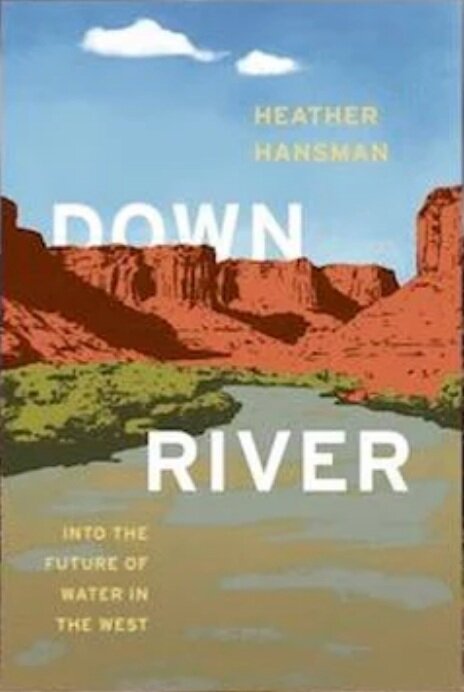Downriver: Into the Future of Water in the West

In Downriver, environmental reporter and former rafting guide Heather Hansman takes readers along on her 730-mile packrafting journey on the Green River through Wyoming and Utah. Hansman’s adventure and narrative serve to explore the complexities of water policy in the West. Years of living in the city as a journalist left Hansman feeling disconnected to the rivers. This was a large contrast to her former days as a raft guide, where she lived seasonally between spring runoff and peak water flows. Hansman determined that in order to understand water issues in the West, she would have to learn from the river, conversations and her own paddle strokes.
The trip begins at the headwaters of the Green River in the Wind River range, and floats to the confluence of the Colorado River. Throughout her journey she meets with farmers, ranchers, city officials, raft guides, policy makers, and everyday folks. She attends public meetings, rafts with outfitters, tours dams, interviews ranchers, and spends many days and nights alone in the sandstone canyons. Her time off the river helps her to understand the convoluted nature of water rights, and she exposes there is truth in every perspective.
Hansman chose to explore water issues through the Green River because it is the most important tributary of the Colorado River. It supplies 33 million people with water, and its over-allocated resources are threatened by increasing populations and climate change. Hansman is successful in making an abstract concept such as water policy approachable by braiding her own experience into understanding water rights and using less jargon. Downriver has been described as a more accessible and updated version of Cadillac Desert.
Section by section, she highlights the different ways in which the river is allocated: drinking water, dams, irrigation, oil and gas development, national parks, cities and ranches. The story moves along as she floats downriver while diving deep into anecdotal stories and research. She creates an engaging narrative by moving between her adventure and the faces and voices of those who depend on the river.
Hansman often takes a break from “policy talk” to reflect on her own perspectives and opinions she develops while on the river. She exposes her fears and lack of confidence while reflecting on her time spent alone. She lets the reader in, commenting on uncertainty, and reveals her humility through details of her skin cracking from the sand and sun.
Boaters float the Green River, Utah. Photo: Kitty Galloway
While she assesses the inevitable future challenges facing water in the West, she also provides some hope. Hope came from conversations on all sides. She says, “The places that made me the most hopeful were the ones where people were trying to get on the same page. Everyone works within their own reality, and sometimes multiple realties can be true.” Hansman argues it isn’t an issue of good guys and bad guys, but instead, that all viewpoints and uses are valid. The solutions have to come from everyone involved.
Hansman reflects on how her connection to rivers has led her to care about conservation issues by saying, “And I keep wondering, maybe a little jaded, if it takes expensive, or intensive experiences like this for people to become attached to rivers. Do you have to know a river this well to champion for it?” Often recreationists argue that to protect wild places, they must experience them. What about the farmers and ranchers who depend on the river for their livelihood? There is a distinct difference between experience and use; Downriver aims to expose each all sides.
Downriver is an example of how a book can explore a complex issue through combining personal narrative and journalism. Hansman’s ability to bring water issues to life through her personal adventure broke down barriers to understanding the future of water in the West. Her story isn’t just about water, it’s about people who depend on water and its uncertain future.


